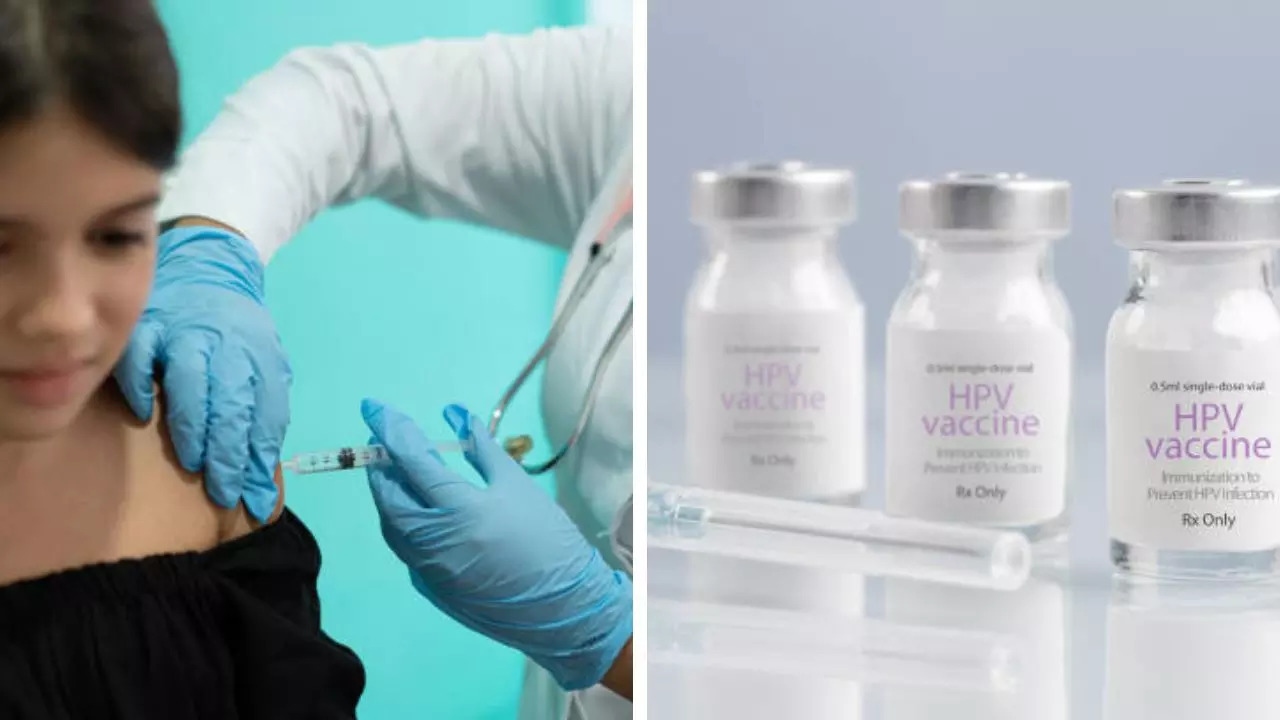The vaccine protects against certain types of cancer caused by HPV infection, a common STD that can cause cervical cancer.
New federal data indicates that the percentage of U.S. teens who were up-to-date on their human papillomavirus, or HPV, vaccines has dropped dramatically since 2020. The Centers for Disease Control and Prevention currently recommends two doses of the HPV vaccine for children ages 11 and older, to be administered six to 12 months apart, though they are eligible to receive the life-saving vaccine beginning at age 9.
Experts say the vaccine protects against certain types of cancer caused by HPV infection, a common STD that can cause cervical cancer and cancers affecting the vagina, vulva, penis, anus and throat. The vaccine can also protect against genital warts. The CDC says anyone under age 26 can get the HPV vaccine if they haven’t received all of their doses. People ages 15 to 26 who haven’t received the HPV vaccine typically need three doses to be fully vaccinated.
The CDC report analyzed data from the 2023 National Immunization Survey for Adolescents, a group of telephone surveys that monitor vaccination coverage among adolescents. Similar surveys are also conducted for children and adults.
The survey tracked trends in coverage by birth year and trends in coverage by eligibility for the Vaccines for Children program, a federally funded program that provides vaccines to children whose parents or guardians may not be able to afford them.
Why did the vaccination rate drop?
According to the report, vaccination coverage for tetanus, diphtheria, and acellular pertussis (Tdap), other than the meningococcal ACWY vaccine, remained generally stable during the COVID-19 pandemic.
However, among those born in 2010, the percentage of youth who were up-to-date on HPV vaccination by age 13 dropped significantly compared with those born in 2007. More than 50 percent of those ineligible for HPV vaccination were up-to-date by age 13, experts said. By comparison, only 48.7 percent of ineligible teens born in 2010 were up-to-date on the vaccine by age 13.
“The decrease in the percentage of adolescents eligible for VFC vaccination who are infected with HPV could indicate a change in accessibility to vaccination through the VFC program, a change that needs further investigation,” the report reads. “This possibility underscores the importance of continued efforts to ensure equitable access to vaccination services for all children and adolescents,” it adds.
What is HPV?
Cleveland Clinic says HPV is a very common virus that affects many different parts of the body. There are more than 100 types of this potentially deadly virus, including strains of HPV that cause warts on the hands and feet. More than 30 types of this strain also attack the genitals, including the vulva, vagina, cervix, penis and scrotum, as well as the rectum and anus.
According to experts, HPV also occurs as a sexually transmitted infection that is transmitted through skin-to-skin contact, causing warts in the genital areas. Some strains of HPV cause cervical cancer, one of the most common and lethal cancers, which can be fatal if not diagnosed in time.
According to the federal health agency, HPV causes about 40,000 cases of cancer in both men and women each year in the United States. However, the HPV vaccine can prevent more than 90 percent of these cancers when administered at the recommended ages, according to the American Cancer Society.
Disclaimer:
The information contained in this post is for general information purposes only. We make no representations or warranties of any kind, express or implied, about the completeness, accuracy, reliability, suitability or availability with respect to the website or the information, products, services, or related graphics contained on the post for any purpose.
We respect the intellectual property rights of content creators. If you are the owner of any material featured on our website and have concerns about its use, please contact us. We are committed to addressing any copyright issues promptly and will remove any material within 2 days of receiving a request from the rightful owner.

